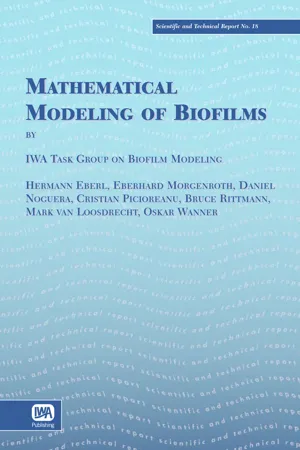
- 208 pages
- English
- PDF
- Available on iOS & Android
About This Book
Over 90% of bacterial biomass exists in the form of biofilms. The ability of bacteria to attach to surfaces and to form biofilms often is an important competitive advantage for them over bacteria growing in suspension. Some biofilms are "good" in natural and engineered systems; they are responsible for nutrient cycling in nature and are used to purify waters in engineering processes. Other biofilms are "bad" when they cause fouling and infections of humans and plants. Whether we want to promote good biofilms or eliminate bad biofilms, we need to understand how they work and what works to control them. Mathematical Modeling of Biofilmsprovides guidelines for the selection and use of mathematical models of biofilms. The whole range of existing models - from simple analytical expressions to complex numerical models - is covered. The application of the models for the solution of typical problems is demonstrated, and the performance of the models is tested in comparative studies. With the dramatic evolution of the computational capacity still going on, modeling tools for research and practice will become more and more significant in the next few years. This report provides the foundation to understand the models and to select the most appropriate one for a given use. Mathematical Modeling of Biofilmsgives a state-of-the-art overview that is especially valuable for educating students, new biofilm researchers, and design engineers. Through a series of three benchmark problems, the report demonstrates how to use the different models and indicates when simple or highly complex models are most appropriate. This is the first report to give a quantitative comparison of existing biofilm models. The report supports model-based design of biofilm reactors. The report can be used as basis for teaching biofilm-system modeling. The report provides the foundation for researchers seeking to use biofilm modeling or to develop new biofilm models. Scientific and Technical Report No.18
Frequently asked questions
Information
Table of contents
- Contents
- Overview
- 1.0 INTRODUCTION
- 2.0 MODEL SELECTION
- 3.0 BIOFILM MODELS
- 4.0 BENCHMARK PROBLEMS
- Nomenclature
- References